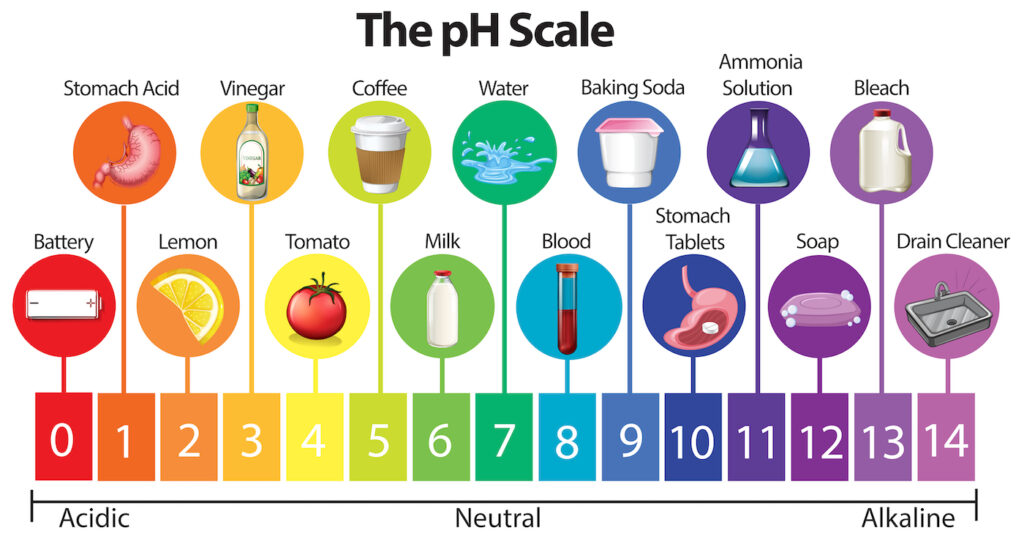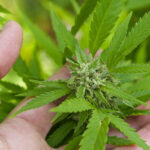The thousands of elite athletes in Paris for the 2024 Olympics have spent considerable effort mastering their diets and training regimens to reach peak performance at the perfect moment. To develop the best cannabis on the planet, commercial farms must work like Olympic training teams to maximize the genetic potential of their plants with the best nutrients and training for each cultivar on its journey to a triumphant harvest.
One of the most critical elements on the farm is the power of hydrogen (pH), a logarithmic scale from zero to 14 used to specify the acidity or basicity of any aqueous solution. The pH level is critical in cannabis cultivation because it directly affects the plant’s ability to absorb essential nutrients when uptaking water from the soil or growing medium. When the pH level is within the optimal range, nutrients like nitrogen, phosphorus, potassium, calcium, and magnesium are more soluble and accessible to the plant.
If the pH is too high (alkaline) or too low (acidic), nutrient uptake can be hindered, leading to deficiencies or toxicities that impair plant growth, health, and yield. Maintaining the correct pH ensures cannabis plants can thrive, resulting in higher quality buds and more bountiful harvests.
As a logarithmic measure, variations in pH value represent major changes. A pH of 5.0 is ten times less acidic than a pH of 4.0. The often underappreciated yet significant detail has profound impacts. The Richter Scale is another example of a logarithmic scale. Seismologists use it to measure an earthquake’s magnitude. Comprehending pH is crucial for everyone working on the farm.
Understanding pH scale ranges
The pH scale is used to measure a wide variety of chemical compounds. In general, a pH range will move from acidic-based to alkaline-based. This denotes whether a compound has higher acidity or alkalinity.
Compounds with the highest acidity have a pH of 0, compounds with the highest alkaline levels have a pH of 14.0, and neutral compounds in the middle have a pH of 7.0. Pure water is the most common example of a substance with a neutral pH of 7.0. If you add baking soda, the pH of the solution will increase to about 9.0.
It’s important to remember the pH scale is logarithmic. That means a compound with a pH of 14 is not just twice as acidic as a compound at 13; it’s 10 times more acidic. Keeping that in mind, a battery is 10 times more acidic than human stomach acid, which is 10 times more acidic than a lemon, and so on.

This is imperative to understand, especially in cannabis cultivation. A low pH can cause nutrient solubility to increase, which can cause toxicity. Equal risks of nutrient deficiencies or nutrient lockout are present with high pH levels, which is why it’s ultimately important to keep your plant’s pH at the optimal range to ensure successful growth and development. Any major deviation in pH requires correction, which can hurt the final product.
The perfect pH for cannabis
According to Wisconsin-based commercial cultivator Kurt Kinneman, different cannabis growing environments and genetics require every cultivator to develop the “perfect pH” for the plants they grow. However, there are a few best practices to follow. In general, a pH greater than 6.0 and less than 6.5 is considered standard, but cannabis root zone pH levels can live anywhere from a pH of 4.0 to 7.0.
Of course, there are a few factors to consider when determining which pH zone will be the most beneficial.
Cannabis soil pH
When growing plants in soil, the ideal pH level will be between 6.3 and 7.0. It’s okay to allow for natural fluctuation within this range depending on the nutrient levels, as long as the measure doesn’t stray too far below 6.3 or above 7.0.
“Because the plants have the soil as a buffer, the pH can be closer to 7 without plants struggling to uptake nutrients,” said Kinneman. If the pH is closer to 7 when growing in soil, it can provide a healthier environment for the microbes present, and microbes mean there is more organic matter being broken down into usable nutrients for the plants.”
pH for hydroponics and soilless growing
When growing hydroponically or soilless, the optimal pH range is more acidic—about 5.8 to 6.3. As with growing in soil, it’s okay to allow the pH levels to fluctuate slightly depending on nutrient intake.
How to test pH
“The pH should be measured whenever you are watering your plants or feeding them nutrients,” said Kinneman. “The pH can change as water sits too, so even if you check your reservoir one day and the pH is good, the next day the pH could change. It is best to keep a log and track your pH constantly throughout the grow cycles.
Many growers use drops or a digital pH meter to take regular measurements.
Drops for pH testing
- Pros: Inexpensive, simple to use, no batteries required.
- Cons: Less precise, subjective color interpretation, time-consuming for large-scale operations.
- Usage: Mix a water sample with a few drops of testing solution, shake gently, and compare the color change to a pH chart.
With this method, prepare the fertilizer, stirring it gently and being careful not to over-oxygenate it, as that may affect the reading. Fill half of a test tube with fertilizer, add three drops of testing liquid, shake gently, and use a color chart included with the kit to measure the level.
Testing strips for pH testing
- Pros: Affordable, easy to use, no calibration needed.
- Cons: Less precise than digital meters, may require frequent purchases.
- Usage: Dip the strip into the water sample, wait for a color change, and compare it to the pH scale provided.
To use a pH testing strip, first prepare a sample of the water or nutrient solution you plan to test. Dip the pH testing strip into the sample and allow it to sit for a few seconds. Remove the strip and immediately compare the resulting color change to the pH color chart provided with the strips. Match the color on the strip to the closest color on the chart to determine the pH level of the sample.
Digital meters for pH testing
- Pros: Highly accurate, quick readings, easy to use for frequent testing.
- Cons: Requires regular calibration, more expensive, needs batteries or power.
- Usage: Calibrate the meter, insert the electrode into the sample, and read the digital display.
With a digital pH meter, testing is incredibly simple. Calibrate the device, stick it into the fertilizer, runoff, or soil, and come away with an accurate reading. While many old-school growers measure the pH with drops and testing strips, a digital pH meter is a far more effective tool for commercial operators who want to take soil samples from multiple plants in different areas of a grow room quickly. Popular options include the Bluelab Soil pH pen and Hanna HALO2 wireless pH tester.
How to adjust pH for cannabis
If a reading reveals a cannabis plant’s pH levels are out of whack, it’s time to bring in some pH adjusters.
“When the pH is out of range, nutrient lockout can occur,” said Kinneman. “This means that plants are not able to uptake nutrients from the growing medium. Having a pH that is out of range will cause leaves to start yellowing and show signs of deficiencies. If the pH is not corrected, necrosis and death of the plant tissue can occur.”
If your pH reading begins to stray too far from the target level, utilize one of the following methods to make the appropriate adjustment:
Natural methods
The most straightforward and simple way to adjust the soil’s pH is with the use of natural products. Effective mediums include manure, worm castings, compost, compost teas, lemon juice, vinegar, lime, limestone, pine needles, and wood shavings.
Natural methods tend to take longer to impact plants than products on the market designed to affect pH. If the soil’s pH is wildly out of balance, consider purchasing a pH-down or pH-up solution to address the issue quickly.
A quick fix if the pH is too high
Growers are more likely to run into alkaline soils, meaning the measure of acidity is too low. If the pH is too high, apply a down-pH solution purchased from any nutrient supplier, local hydroponics store, or major gardening retailer.
A quick fix if the pH is too low
When dealing with very acidic soils, it may be necessary to increase the pH. If the pH is too low, apply a pH-up solution to significantly increase the pH and allow proper nutrient uptake to take place.
FAQ
Why is pH important for cannabis cultivation?
The pH level is crucial because it affects the plant’s ability to absorb nutrients. Maintaining the correct pH range ensures that essential nutrients are available for uptake, leading to healthy growth and optimal yields.
What is the ideal pH range for cannabis plants?
For soil-grown cannabis, the ideal pH range is between 6.3 and 7.0. For hydroponic systems, the optimal range is slightly more acidic, between 5.8 and 6.3.
How often should I test the pH of my cannabis plants?
It is recommended to test the pH every time you water or feed your plants. For hydroponic systems, daily testing is advised due to the lack of a soil buffer.
What can happen if the pH level is too high or too low?
If the pH is too high (alkaline) or too low (acidic), it can cause nutrient deficiencies or toxicities. This can lead to symptoms like yellowing leaves, stunted growth, and poor bud development, ultimately impacting the quality and yield of the harvest.
How can I adjust the pH if it is out of the optimal range?
To lower pH, you can use pH-down solutions like phosphoric acid or natural options like vinegar. To raise pH, use pH-up solutions like potassium hydroxide or natural methods like lime. Regular monitoring and adjustments help maintain the optimal pH range for healthy plant growth.











[…] garden can identify a potential issue before it becomes a serious problem. From signs of a change in pH to subtle shifts in plant color or texture, these visual cues can be invaluable in identifying […]
[…] medium between daytime irrigation events and during the night to achieve an optimal volumetric water content and electrical conductivity (which indicates the strength of the nutrient solution) for the stage […]
[…] out exactly what our plants need and give it to them without ever overdoing anything. We’re not putting water into the soil, where the excess would go to waste. Instead, we mist our plants with the exact amount of water and […]
[…] the substrate or substance that supports a plant’s root system and provides an environment for water, nutrients, and plant exudates to exchange. The cannabis plant can grow in almost any medium but […]
[…] https://mgmagazine.com/business/growing-horticulture/cannabis-ph/ […]
[…] for both the water supply and the growing media. These sensors can measure parameters like pH, electrical conductivity, temperature, dissolved oxygen, and oxidation-reduction potential. Some of […]
[…] enough for cannabis to mature, but since the element is a driving force in plant photosynthesis and nutrient uptake, using CO2 enrichment can have an enormous impact on total plant growth and […]
[…] https://mgmagazine.com/business/growing-horticulture/cannabis-ph/ […]
[…] uptake often is reliant on pH level. If the growing medium falls out of the optimum pH, nutrient lockout may occur—meaning the plant […]
[…] growers to find what they use on their farms and recommend to their friends looking for the best soil pH tester for home grow […]
[…] Most cannabis strains thrive when provided with a slightly acidic soil mix, with a pH of between 6 and 6.5. Fortunately, most high-quality potting mixes fall within the correct pH […]
[…] https://mgmagazine.com/business/growing-horticulture/cannabis-ph/ […]
[…] is dominated by everything that happens before the harvest. Lighting, soil types, nutrients, pH, and a myriad of other inputs play a critical role in the development of a cannabis plant, but the […]